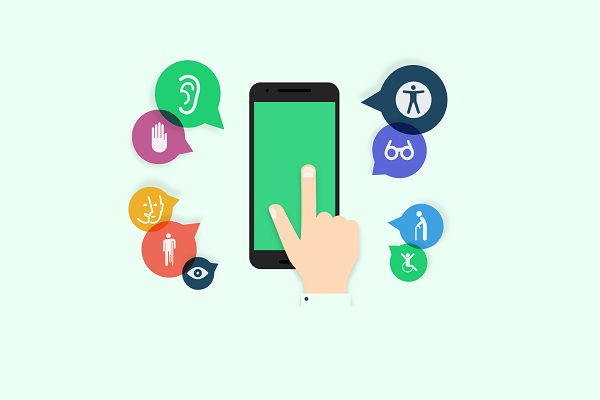Android device users with special needs can easily customize their devices with app settings through Android’s accessibility features. In other words, these features are useful for individuals with various limitations, such as hearing, physical, and visual impairments, to improve their ability to interact with and access apps and web pages.
It also provides a good mobile experience for people with disabilities. They can functionally activate these features, such as when driving or accessing their devices in noisy or low-light environments.

Types of Android Accessibility Features
Android devices have many technologies and features that are there to help individuals with special needs. One of them is this accessibility feature.
The existence of this feature ensures that every Android device is easy to access and use by anyone. Starting from people with limited mobility, hearing problems, low vision and many more.
Here are the various accessibility features that exist on Android devices:
Click to Speak
This feature limits the spoken feedback function to only the options that the user selects. This feature can read and explain the option clearly and aloud.
Oral Feedback
This feature allows users to interact with their device using both tactile and verbal feedback. It even explains each action to the user and provides verbal notifications.
Braille Screen
The next Android accessibility feature is the braille screen. This feature allows users to connect a braille screen with Android through the help of Bluetooth. The Braille Screen can also integrate with TalkBack to become a combination of braille and speech.
Access Button
This feature is particularly useful for individuals with limited mobility. The Access Button provides an alternative to the touch screen. It allows users to access the keyboard or mouse and other settings buttons.
Voice Commands
If you have difficulty with the touch screen, the Voice Commands app allows users to control the device using only their speech.
This feature also allows users to access various apps and edit text hands-free. Currently, this Voice Command feature is only available as a beta release in English only.
How to Enable Android Accessibility Features
Here are some ways to enable accessibility features on your Android phone:
- Go to your phone’s Settings menu.
- Then, find and select the section marked Accessibility. Tap the section to continue.
- Then, scroll until you find the Accessibility Menu option.
- Tap the option to start enabling Accessibility Menu.
- To be able to activate it, you must grant your device access permissions and menu controls.
- Next, you will see a small button on the screen that will open a new menu.
- To be able to open the menu from any part of the screen, select the small shortcut option.
- You can find shortcuts to the power menu, new apps, brightness, Assistant, volume control and more.
- In addition, you can also access each set of accessibility settings through the menu.
That’s the explanation of Android accessibility features complete with the types and steps to activate them. This feature will greatly help individuals with special needs to access and operate their Android devices.